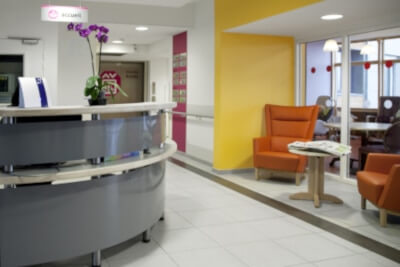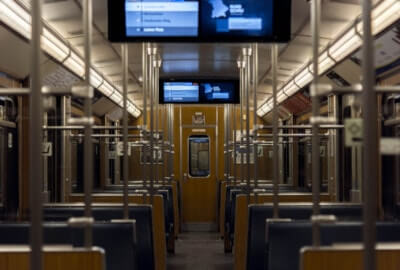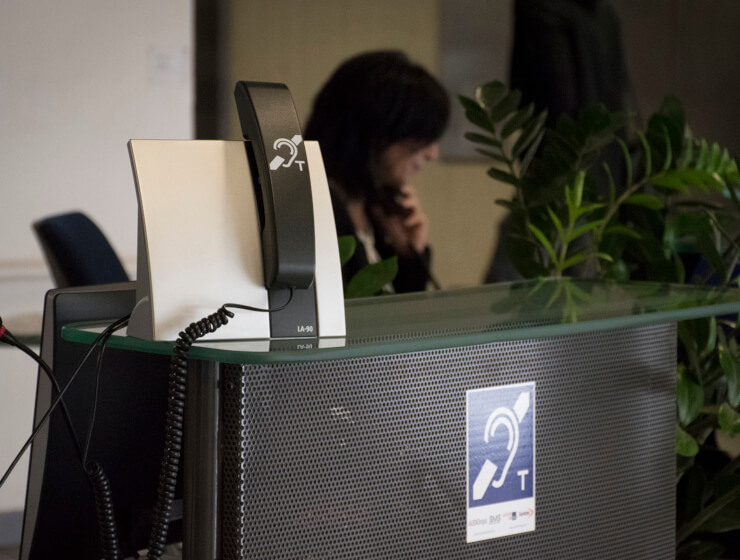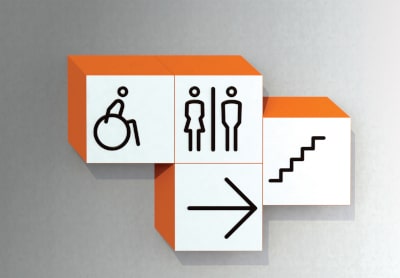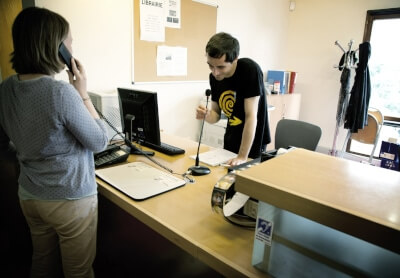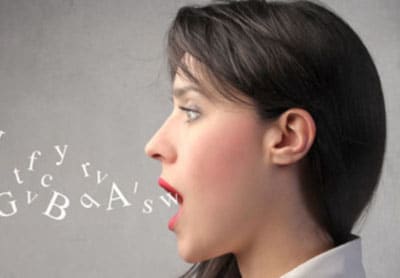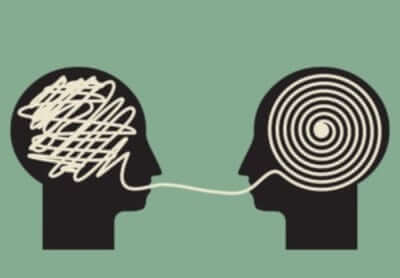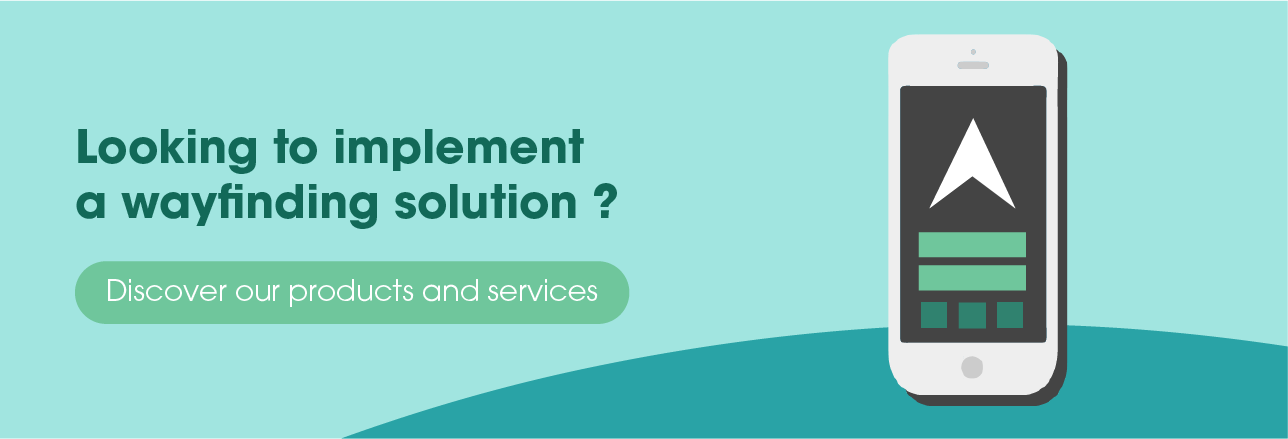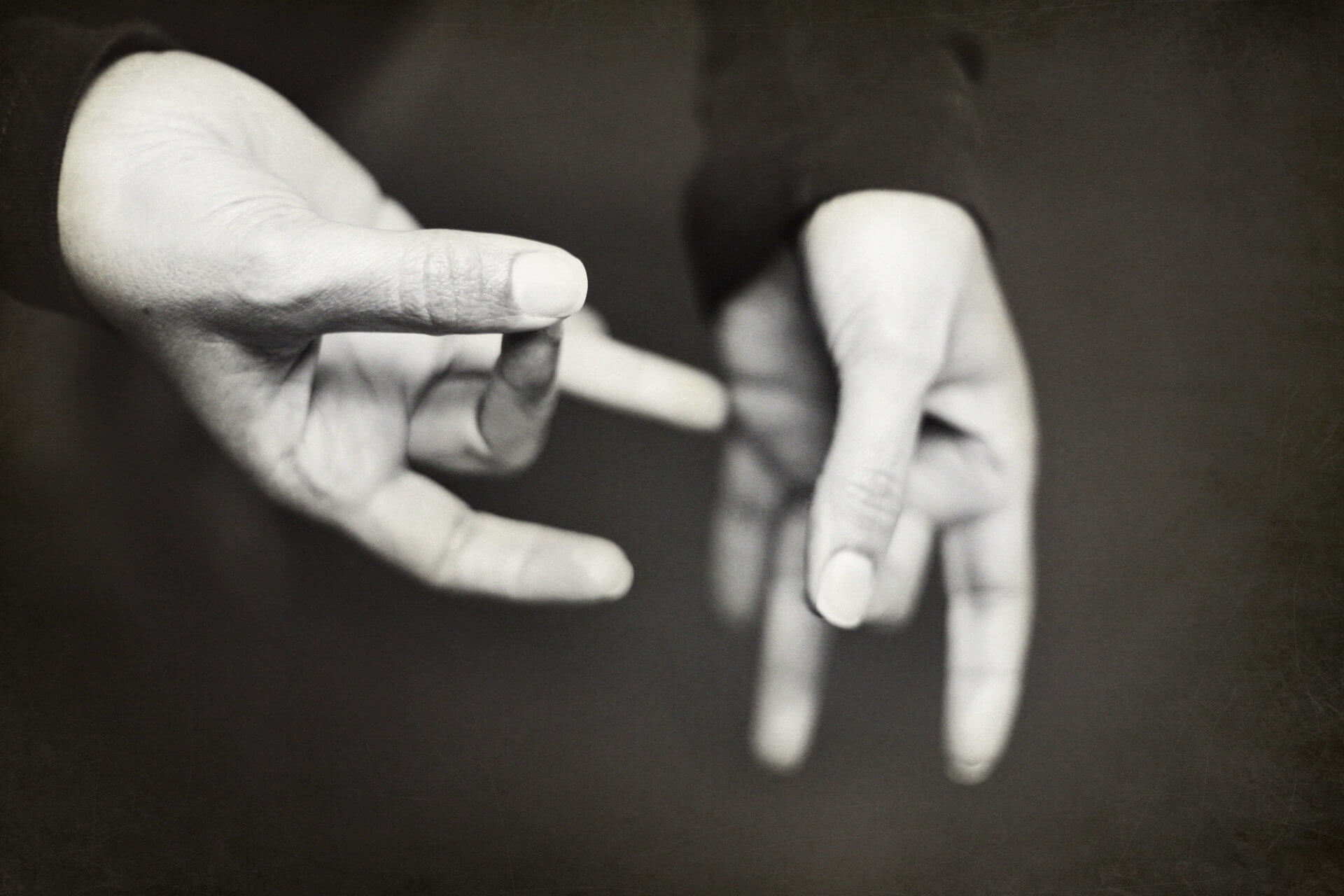
12 tips to welcome a deaf or hard of hearing person
- Ensure good lighting
- Make dubbing of audio messages available
- Use induction loop
- Provide paper to write
- Provide suitable aids
- Speak directly to the person
- No need to scream
- Stand in front of the person
- Speak clearly and disctincly
- Use a common vocabulary
- Reformulate if necessary
- Beware of misunderstandings!
You don’t know sign language and you sometimes welcome deaf or hard of hearing people? Don’t panic!
For fear of doing wrong, we often just keep quiet. However, there are tips to facilitate verbal communication with deaf people. So, in an attempt to reestablish this dialogue this article will provide you with tips to make everyone comfortable.
The objective is to help hearing people working in the public and private sector by making them aware of simple ways to facilitate communication with deaf and hard-of-hearing people.
What are the right things to do? How to adapt your environment and your body language? Here are 12 tips to help facilitate verbal exchanges daily.
- Ensure good lighting and absence of backlighting especially behind the reception desk

- If possible make dubbing of audio messages available by a visual display with text but also images and pictograms

- Use amplification systems or a induction loop system to improve hearing quality for people wearing hearing aids

- Provide paper or a smartphone to write or draw if necessary

- Provide suitable visual aids: signage, written documents, diagrams, visual guides in American Sign Language etc.

- Speak directly to the person even if he or she is accompanied

- No need to scream or raise your voice. It distorts the articulation

- Stand in front of the deaf or hard-of-hearing person. Stand in the light but not against the light so that he or she can see your lips when speaking

- Express yourself clearly and distinctly by marking downtime (without exaggerating) to see if the person understands

- Use a common vocabulary avoiding word play and expressions

- Reformulate if necessary by using synonyms

- Check the message’s understanding: beware of misunderstandings!

Hearing-impaired people have very different profiles. The choice of communication varies from one person to another and their environment. These simple and easy-to-implement tips will allow you to interact with every visitor or client, taking into account hearing impairment in all its diversity.
To understand more about this invisible impairment, the article 8 Clichés About Deaf People will help you toss aside prejudices to welcome deaf people in the best possible way.
Feel free to share these tips around you to make all your staff aware of good communicative attitudes.
media

No need to scream or raise your voice. It distorts the articulation
writer

Zoe Gervais
Content Manager
stay updated
Get the latest news about accessibility and the Smart City.
other articles for you

Open Data Is Key to Fostering Universal Accessibility
Open data represents an opportunity for cities to reach universal accessibility. It shows the missing links of the mobility chain.
Our Audio Beacons Guide the Blind and Visually Impaired at the Helsinki Subway
The Helsinky subway improved their audio signage system by installing on demand and remotely activated audio beacons.
7 Good Reasons to Install Audio Beacons at Your Public Transport Network
Audio beacons are an efficient way to provide more autonomy to blind and visually impaired people. They can easily use public transport.

Will Remote Activation Become the Norm for Accessible Pedestrian Signals?
More and more cities like New York have been exploring remote activation to trigger accessible pedestrian signals.
share our article!
more articles

Disability Statistics in the US: Looking Beyond Figures for an Accessible and Inclusive Society
Disability Statistics in the US: Looking Beyond Figures for an Accessible and Inclusive Society Around 61 million adults in the United States live with a disability. Diving into disability statistics in the US will help us know exactly who is concerned and what...
Our Audio Beacons Guide the Blind and Visually Impaired at the Helsinki Subway
Our Audio Beacons Guide the Blind and Visually Impaired at the Helsinki SubwayOur audio beacons equip the new line of the Helsinki subway in Finland. They help blind and visually impaired people locate the points of interest of a station. For users with visual...

Will Remote Activation Become the Norm for Accessible Pedestrian Signals?
Will Remote Activation Become the Norm for Accessible Pedestrian Signals?Without pushbutton, there are no accessible pedestrian signals. That’s how APS work in the U.S. But more and more cities have been exploring remote activation like New York City. The Department...

Hearing Impaired People: a Multitude of Profiles for Different Needs
Hearing Impaired People: a Multitude of Profiles for Different Needs Did you know that hearing impaired people have several profiles and that the way they identify themselves is important? You may be familiar with deaf and hard of hearing people but for each of...
NEVER miss the latest news about the Smart City.
Sign up now for our newsletter.
Unsubscribe in one click. The information collected is confidential and kept safe.
powered by okeenea
The French leading company
on the accessibility market.
For more than 25 years, we have been developing architectural access solutions for buildings and streets. Everyday, we rethink today’s cities to transform them in smart cities accessible to everyone.
By creating solutions ever more tailored to the needs of people with disabilities, we push the limits, constantly improve the urban life and make the cities more enjoyable for the growing majority.

